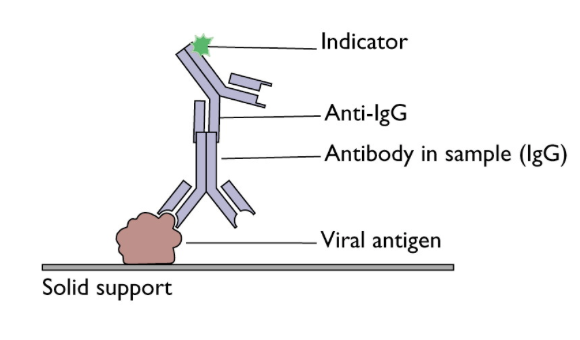It's quite a bit more difficult than the other answers make it out to be.
First, we need a rough draft of what kind of immunity we're dealing with. Often, with vaccines it's humoral immunity (antibodies and B-cells). This is what the existing answers are talking about. An alternate type of vaccine, for example, would be a T-cell inducing vaccine, and these are generally a whole lot more complex.
Let's say we're talking about humoral immunity, and are not getting into the more experimental types of vaccines.
We can go through the list of vaccine types, and discuss if there's a potential benefit of having an immune individual (basic description of vaccine types found here)
Live-attenuated vaccines
Mostly useless, since there's no way to track down how to attenuate the pathogen from an immunized individual. Possibly, we could use serum of the individual to see if the attenuated pathogen is still immunogenic by testing if the subject's serum still binds the pathogen, but that's unreliable and animal testing is likely more reliable. The rare exception is if the attenuated variant occurs naturally, as was the case with cow pox, the first vaccine.
Inactivated vaccines
Very useless, the main challenges here are truly inactivating the pathogen while keeping the vaccine immunogenic and exposing representative surface proteins. Our subject is not going to help at all with these challenges.
Subunit, recombinant, polysaccharide, and conjugate vaccines
Somewhat useful, our subject can help us identify the subunit or polysaccharide used (as discussed in the answer by Willk). That still leaves us with the challenge of creating a vaccine that forms the right type of immunity against this subunit or polysaccharide. Recombinant and conjugate vaccines are more complicated, since the targets are artificially created, and we can only test if we have "the right one".
Also note that quite often, multiple antigens are used in a single vaccine of these types, and a single person might only respond to a fraction of the antigens. In that case, the person can be immune, while it's impossible to track down all the antigens used, and making a vaccine only based on the antigens that induced immunity in this person might have a much lower efficacy than the original vaccine.
Toxoid vaccines
Toxoid vaccines are vaccines against a specific toxin, and generally somewhat easy to create if you have a toxin in mind that constitutes a real health problem. Our subject might be able to help, but it's unlikely that would be necessary, since the toxin would've already been identified.
Our subject can also give us a hint which kind of vaccine was used. Types 1 and 2 will likely produce a more diverse antibody repertoire than 3 and 4. But this will likely be inconclusive, since we only have a single subject.
For a more thorough read on vaccine types, I recommend this NIH webpage. Be sure to read into adjuvants and their role in vaccines too. If you have a specific type of vaccine in mind, I can try to elaborate on the possible role of samples from an immunized patient in reverse-engineering the vaccine, but generally, that role is going to be pretty limited.
An interesting experimental vaccine type to name in this context might be DNA vaccines, because this is one of the few types where there might be an actual major benefit to having an immunized individual with a specific vaccine. If he/she were to be vaccinated using a DNA vaccine, we could try to identify and culture the immunogenic cells by exposing them to the pathogen, and then fully sequencing the immunogenic cells, compare with the overall genome of that person, and possibly identify the sequence used in the vaccine (it would be a sequence expressed significantly more in immunogenic cells). That would still leave us with identifying adjuvants used.

